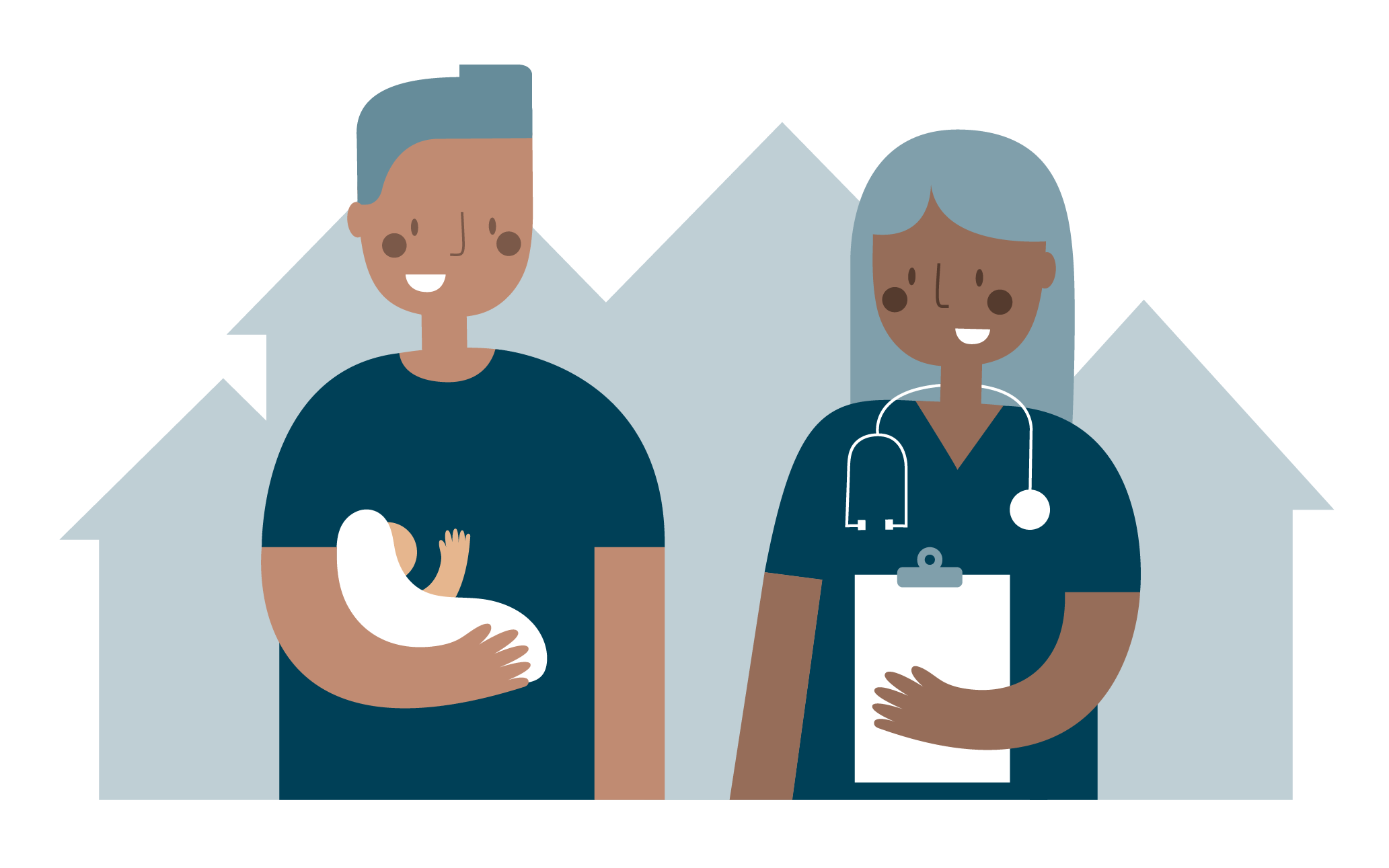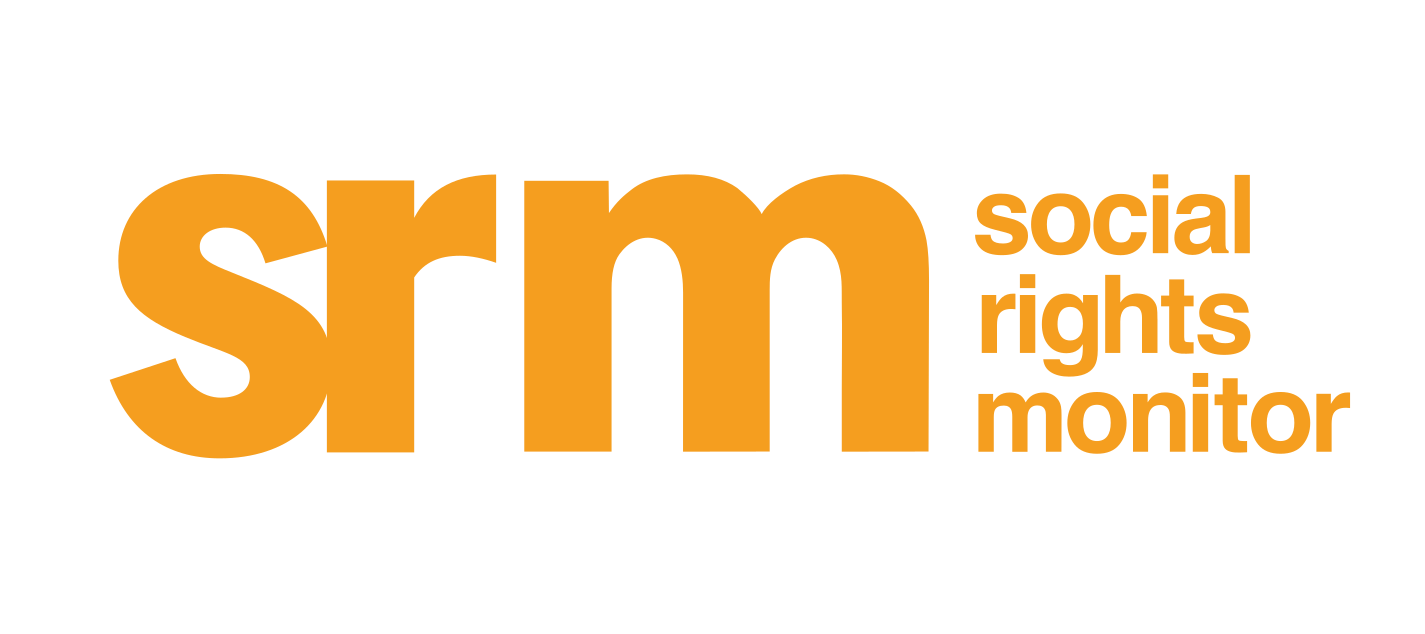Germany
Score: 51
Social Rights Monitor Overview
Germany was particularly affected by the Russian invasion of Ukraine, both due its dependence on Russian energy sources and the large numbers of Ukrainian refugees who sought protection in the country. The NSG reported on the severe effects of the invasion on German society, noting that wages have not kept up with rising food, energy and housing costs. It particularly highlighted the housing crisis, as there is a shortage of almost 2 million apartments, making housing more and more unaffordable. Although Germany had great success promoting sustainable public transport through the introduction of the €49 Deutschlandticket, the NSG reported that no progress has been made to reduce Germany’s dependence on fossil fuels, especially coal. Positive developments over the course of the reporting period include the expansion of German language lessons for migrants, the successful mobilisation of state and civil resources to welcome Ukrainian refugees, and the continued resilience of German employment.

Score: 60
Equal Opportunities and Access to the Labour Market
Gender equality
Although a majority of Germans believe that gender equality has largely been achieved in their country,[1] the NSG pointed to many areas in which inequality between men and women is still stark. It raised concerns such as wage gaps, the distribution of occupations, the distribution of unpaid household and care work, unequal access to education and gender-based violence. In the labour market, the gender pay gap has not improved for several years, remaining at 18% in 2022.[2] Women in Germany are on average less likely to be employed than men, more likely to be working part time and more likely to be employed in lower-paying sectors such as healthcare, education and cleaning.[3] Furthermore, the gender hour gap (defined as the gap between the average number of paid working hours per month between men and women) was 27 hours in 2022. The NSG points out that this gap not only contributes to the gender pay gap but is also an indicator of the large amount of unpaid care work performed by women. Whereas German men spend around 2.3 hours a day on unpaid care work, the figure for women is 5.2 hours.[4] The proportion of women in management positions is also a cause for concern. The only sectors with an average of more than 24% of management positions filled by women are publishing (24.4%), retail (26%) and healthcare (37%).[5] Through the Leadership Positions Act II of 2021, the Federal Government has attempted to bring the proportion of women in management positions to at least 30%. However, the Act has poor monitoring mechanisms and foresees no procedures for sanctioning companies that do not comply. However, after the first Leadership Positions Act of 2015, the share of women in management positions in the public sector rose from 32% in 2015 to 41% in 2022.[6]
Inclusion of migrants, refugees and asylum seekers
Germany hosts the largest number refugees of any country in the European Union and the 4th largest number in the world. Its refugee population doubled from 1.2 million at the beginning of 2022 to 2.1 million in early 2023 as a result of Russia’s invasion of Ukraine.[7] It currently hosts approximately 900,000 Ukrainians, 665,000 Syrians, 180,000 Afghans and 151,000 Iraqis.[8] The number of asylum seekers dropped following the closure of the Western Balkans route and the EU-Turkey agreement, and the acceptance rate also dropped, to a low of 35% in 2018, but it has since increased. In the first five months of 2023 alone, 102,000 asylum applications were received.[9] The NSG reports that the inclusion and welcoming of Ukrainian refugees has been a great success, despite the large number of arrivals. However, it rightly asked why measures such as visa waivers and the EU temporary protection were only put in place for Ukrainians. The possibility to gain international protection for people from other countries is much more constrained, and asylum decision procedures sometimes take several years, creating severe uncertainty for the people involved. The right of opportunity residence was also introduced in 2023, allowing people who are “tolerated” for five years to gain a permanent right to stay. “Toleration” refers to the status assigned to people who, despite being obliged to leave the country, have gained a suspension of this obligation for reasons such as ongoing education, permanent employment or the risk of family separation. However, it is estimated that only 33,000 people out of a potential pool of 135,000 will actually be able to make use of this right.[10]
The integration of migrants, asylum seekers and refugees is governed by the National Action Plan for Integration (NAP-I). The most concrete example of the NAP-I is the courses for immigrants on the German language and orientation in Germany. A record high number of participants followed these courses in 2022 – over half a million people, 200,000 of whom were Ukrainians. The courses consist of 700 hours of lessons, 600 hours of which are devoted to German language acquisition and 100 of which make up the orientation course. This includes information on the German legal system, history, culture and values. The NSG reports that the courses provide participants with a sense of identification with Germany and boost integration. Due to high demand, the government simplified accreditation procedures for course teachers in 2022, leading to a 40% increase in licensed teachers from 2021 to 2022. Moreover, €6 billion has been invested in integration measures since 2016.[11] Overall in 2022, the German government invested €830 million in projects and measures related to migration and integration.[12]
Youth unemployment
The youth unemployment rate in Germany hit a record low of 4.4% in 2022.[13] The rate dropped even further in April 2023, to 4.2%. The NSG reports that Germany was largely spared a rapid rise of youth unemployment during the pandemic.
| Good Practice: Active Labour Market Policies
Youth unemployment is particularly low in Germany compared to other European countries. This is partly explained by the country’s well developed vocational training system and public employment service, the Federal Employment Agency (Bundesagentur für Arbeit, or BA). The BA is known particularly for the flexible counselling service it provides, which is oriented to the needs of the person seeking employment. This allows for more discretionary freedom in the counselling process, strengthening the role and agency of the jobseeker in their transition back to work. The BA’s focus on subsidising vocational training is another key reason for Germany’s labour market success.[14] Regarding active labour market policies for young people in particular, the NSG pointed to the Act to Improve Integration Opportunities in the Labour Market. This law, passed in 2011, has made a significant contribution to preventing youth unemployment. The act provides for personalised support in searching for a job or training place before someone even leaves school. By focussing on providing a smooth transition between school and employment or further training, the system reduces both insecurity for young jobseekers and the burden on the social security system.[15] |
[1] Statista (2018), Survey on the realization of women’s equality in Germany: https://de.statista.com/statistik/daten/studie/926357/umfrage/umfrage-zur-verwirklichung-der-gleichstellung-der-frau-in-deutschland/
[2] Statista (2023), Gender pay gap by 2022: https://de.statista.com/statistik/daten/studie/3261/umfrage/gender-pay-gap-in-deutschland/
[3] Statista (2023), Proportion of women and men in various occupational groups 2022: https://de.statista.com/statistik/daten/studie/167555/umfrage/frauenanteil-in-verschiedenen-berufsgruppen-in-deutschland/
[4] Statista (2021), Infographic: Gender Care Gap still far too high: https://de.statista.com/infografik/24809/hoehe-des-gender-care-gaps-in-deutschland/
[5] Statista (2023), Women in management positions by sector 2022: https://de.statista.com/statistik/daten/studie/575509/umfrage/frauenanteil-in-fuehrungspositionen-in-deutschland-nach-branchen/
[6] Federal Ministry for Family Affairs, Senior Citizenship, Women and youth (2021), FüPoG II: Second act for management positions: https://www.bmfsfj.de/bmfsfj/service/gesetze/zweites-fuehrungspositionengesetz-fuepog-2-164226
[7] UNHCR (2023), Refugee Statistics: https://www.unhcr.org/refugee-statistics/
[8] Concern Worldwide (2023), Which countries are taking in the most refugees in 2023?: https://www.concern.net/news/which-countries-take-in-the-most-refugees
[9] Statista (2023), Total protection rate: Proportion of asylum seekers recognized as refugees or entitled to asylum in Germany from 2005 to 2023; https://de.statista.com/statistik/daten/studie/452067/umfrage/gesamtschutzquote-der-asylbewerber-in-deutschland/
[10] Media Service Integration (2023), Right of residence: How many people does it affect?: https://mediendienst-integration.de/artikel/chancenaufenthaltsrecht-wie-viele-personen-betrifft-es.html
[11] Federal Audit Office (2022), Integration Measures in the Federation: https://www.bundesrechnungshof.de/SharedDocs/Downloads/DE/Berichte/2022/integraionsmassnahmen-zugewanderte-gefluechtete-volltext.pdf?__blob=publicationFile&v=1
[12] Federal Ministry of the Interior (2023), The ministry invests €160 million more in integration courses: https://www.bmi.bund.de/SharedDocs/pressemitteilungen/DE/2023/06/mittel-integrationskurse.html
[13] Statista (2023), Youth unemployment rate 2005 – 2022: https://de.statista.com/statistik/daten/studie/440534/umfrage/jugendarbeitslosenquote-in-deutschland/#:~:text=Jugendarbeitslosenquote%20(15%20bis%20unter%2025%20Jahre)%2%200in%20Deutschland%20bis%202022&text=Diese%20Statistik%20zeigt%20die%20Arbeitslosenquote1,im%20Jahresdurchschnitt%204%2C4%20Prozent
Right Source: https://www.tagesschau.de/inland/bamf-sprachkurse-101.html [Ga1]
[14] IAB Forum (2023), Active Labour Market Policies: https://www.iab-forum.de/en/active-labour-market-policies/
[15] German Parliament (2011), Law to improve integration opportunities in the labour market: https://dserver.bundestag.de/btd/17/062/1706277.pdf

Score: 50
Fair Working Conditions
Collectively agreed wages did not keep pace with inflation in 2022, rising only by 2.7% on average compared to an inflation rate of 7.9%. This was largely because many wage agreements in force were negotiated before the Russian invasion of Ukraine, when no large increase in inflation was foreseen. According to figures from the Federal Employment Agency, Germany is facing a severe labour shortage, which is estimated to reach 240,000 unfilled positions by 2026. This tight labour market may help unions keep wages in line with inflation in upcoming wage negotiations. The minimum wage was raised twice over the course of 2022, first to €10.45 an hour in July and then up to €12 in October.[1]
Work-life balance
The NSG reported that German employees are increasingly dissatisfied with their work-life balance, which is having negative effects on their mental and physical health. According to a study carried out in 2022, 48% of employees report working more than their contractually agreed hours; 62% say they sometimes work even when they feel sick; 57% say they feel exhausted after a working day; and 38% report finding it difficult to switch off after work and enjoy their leisure time. Young workers (aged 16 to 34) are particularly affected: 72% report that they work even when ill, and 40% declare that they would like to change jobs (compared to a rate of 27% for the whole population).[2]
The NSG raised the four-day working week as a possible solution to German’s deteriorating work-life balance. More than 80% of those surveyed would be in favour of a four-day week with no reduction in pay. Trial programmes have been run in the UK and Spain, among other countries, and have proved a great success. However, the NSG reports that the German Ministry of Labour has no plans to promote the four-day working week. Moreover, the requirement to allow employees to telework that existed during the Covid pandemic is no longer in force, meaning that telework is completely at the discretion of employers. The Federal Government plans to present legislation to strengthen the right to telework, but so far, no progress has been made.
[1] Eurofound (2023), Working Life in Germany 2023: https://www.eurofound.europa.eu/en/resources/article/2023/working-life-germany-2023
[2] IHK Hannover (2022), Current study on working life in Germany published: https://www.nw-ihk.de/2022/10/studie-arbeitsleben-mintel-deutschland/
[3] Hans Böckler Foundation (2021), Around 81 percent of full-time employees want a four-day week, and the vast majority want wage compensation: https://www.boeckler.de/de/pressemitteilungen-2675-rund-81-prozent-der-vollzeitbeschaftigten-wollen-vier-tage-woche-49242.htm
[4] Federal Ministry of Labour and Social Affairs (2023), Teleworking: https://www.bmas.de/DE/Arbeit/Arbeitsrecht/Teilzeit-flexible-Arbeitszeit/homeoffice.html#doc387a1a0e-79c3-4c4b-a284-ac58a04d62bcbodyText1

Score: 42
Social Inclusion and Protection
Poverty eradication
The German at-risk-of-poverty-or-social-exclusion rate was 20.9% in 2022, representing no change from 2021. In absolute terms this means 17.3 million Germans are at risk of poverty or social exclusion. Paritätischer Gesamtverband, an umbrella organisation of voluntary welfare organisations, estimates that 26.6% of Germans in poverty are employed, 23.3% are retired, 20.9% are children under 18, 5.5% are unemployed, and the remaining 23.7% belong to other categories of non-working people. The NSG notes that the pandemic caused a drastic increase in poverty and social exclusion, especially among people in occupations that meant they could not work during the lockdown. Another issue raised was the high inflation caused by Russia’s invasion of Ukraine, which led to a drop in real wages of 5.5% in 2022. Inflation has been particularly high for staple items such as food, housing and energy.[3] The average German now spends more than half (52%) of their income on housing and food, meaning less than half is available for all other purposes.
The Federal Government provided some relief through several measures over the course of 2022. For energy, this involved the abolition of the EEG levy, and a brake on gas and electricity prices. Other measures included the introduction of the Deutschland Ticket (discussed in the Just Transition section), the raising of unemployment and child benefits, and the introduction of several one-off payments. The NSG broadly considered these measures effective.
Housing
The NSG reports a catastrophic situation in housing in Germany. The housing supply gap, especially for social housing, is massive and only expanding. There is a shortage of 1.9 million affordable apartments in the largest 77 German cities alone, and the situation is worse in cities with more than one million inhabitants. The social housing stock has halved since 2006, caused by the elimination in the 1990s of incentives for building social housing. The housing crisis affects low-income singles and households of more than five people. Around 8.5 million people, 13% of tenants, face housing costs that are so high that, after paying their rent, their income is below subsistence level.
The NSG highlighted the Alliance for Affordable Housing, launched by the Minister of Construction Klara Geywitz. The Alliance, which includes local and state governments, churches and architects’ associations, drew up 187 measures to serve as the basis for action to resolve the housing crisis and help the Federal Government reach its target of building 400,000 homes a year, including classified as social housing. However, the NSG noted 2022.
[1] Federal Office for Statistics (2023), Living conditions and risk of poverty:
[2] Der Paritätische (2023), Poverty Report 2022: https://www.der-paritaetische.de/themen/sozial-und-europapolitik/armut-und-grundsicherung/armutsbericht-2022-aktualisiert/
[3] Federal Office of Statistics (2023), Real and nominal wages: https://www.destatis.de/DE/Themen/Arbeit/Verdienste/Realloehne-Nettoverdienste/_inhalt.html
[4] Federal Office for Statistics (2023), Consumer spending and cost of living:
[5] Federal Agency for Civic Education on poverty (2022), Poverty in Germany is growing:
https://www.bpb.de/kurz-knapp/hintergrund-aktuell/516505/armut-in-deutschland-waechst/
[6] Stern (2023), Study: There is a shortage of 700,000 apartments in Germany: https://www.stern.de/news/studie–in-deutschland-fehlen-700-000-wohnungen-33093314.html

Score: 42
Civic Space
Freedom of speech and assembly
Although Germany remains one of the countries with the most respect for freedom of speech and assembly, there were some concerning developments in 2022. The most notable were a series of attacks on journalists perpetrated by right-wing conspiracy theorists at protests against Covid measures. Attacks on journalists occurred in Aachen,[1] Waren,[2] Ortenaukreis,[3] Dresden[4] and Freiberg,[5] among other places. Reporters Without Borders also report the occasional use of Strategic Lawsuits Against Public Participation (SLAPPs) by big companies to silence and intimidate the press.[6]
Attacks on protestors, both from state and non-state actors, also occurred during the reporting period. Most tragically, a transgender man was murdered at a Pride event in Münster in September 2022, after intervening in defence of a group of women being threatened by a man shouting homophobic abuse.[7] In May, Berlin authorities unjustifiably and disproportionately prevented Palestinian activists from publicly marking Nakba day.[8] In October, unknown assailants attacked pro-democracy protestors outside the Iranian embassy in Berlin, threatening them with a gun.[9] More broadly, and in line with the European trend, German authorities have severely – and sometimes disproportionally – punished civil disobedience acts carried out by environmental activists, often resulting in detention. Despite these incidents, Germany still remains a country in which civic space is respected. The CIVICUS monitor declares German civic space to be open.[10]
[1] Mapping Media Freedom (2022), Journalist Armilla Brandt and escort harassed while covering protest: https://www.mapmf.org/alert/25314
[2] Mapping Media Freedom (2022), Photojournalist Lotta Ulrich insulted during cost-of-living crisis demonstration in Waren: https://www.mapmf.org/alert/25268
[3] Mapping Media Freedom (2022), Freelance journalist Armilla Brandt physically attacked during a Monday night rally: https://www.mapmf.org/alert/25290
[4] Mapping Media Freedom (2022), Journalist hit in the face by Querdenker demonstrator: https://www.mapmf.org/alert/24514
[5] Mapping Media Freedom (2022), Journalists insulted by demonstrators and attempted attack: https://www.mapmf.org/alert/24539
[6] Reporters without Borders (2023), Germany: https://rsf.org/en/country/germany
[7] The Guardian (2022), Transgender man dies after Pride parade assault in Germany: https://www.theguardian.com/world/2022/sep/02/transgender-man-dies-after-pride-parade-assault-in-germany
[8] Human Rights Watch (2022), Berlin Bans Nakba Day Demonstrations: https://www.hrw.org/news/2022/05/20/berlin-bans-nakba-day-demonstrations
[9] The Guardian (2022), Protesters attacked near Iranian embassy in Berlin: https://www.theguardian.com/world/2022/oct/31/protesters-attacked-near-iranian-embassy-in-berlin
[10] CIVICUS (2023), Monitor – Germany: https://monitor.civicus.org/

Score: 46
Just Transition
Access to energy
Germany was especially affected by the energy crisis brought on by Russia’s invasion of Ukraine. In May 2022, 25% of German citizens experienced energy costs that exceeded 10% of their income. Lower-middle-class Germans, who earn between 60% and 80% of the average German income, were twice as likely to experience excessive energy costs in 2022 as in 2021.[1] The Federal Government implemented several relief measures, including a , an energy price brake in December of 2022[2] and a lump sum payment of €200 for students in March 2023. However, the NSG noted that the government was criticised for not doing enough to support more vulnerable groups such as students and for delaying the support payments. Most concerningly, the NSG pointed out that during this period of high inflation, declining real wages and rising poverty, large companies made billions of euros in profits. This was especially the case for energy companies, which in some cases doubled their profits compared to 2021.[4] Despite this, calls for a tax on excess profits were not answered.
The NSG also reported that 2022 was a setback for Germany’s transition to renewable sources of energy. Germany is the largest energy consumer in Europe, and 75% of its energy mix is made up of fossil fuels, while only 16% comes from renewable sources. Furthermore, Germany’s reliance on coal has only increased over the course of 2022-2023, especially with the closure of its nuclear power stations. The likelihood of the country reaching its goal of eliminating its dependence on fossil fuels by 2030 is very slim.[5]
Access to sustainable mobility
The number of people using public transport in Germany increased rapidly in 2022. Over the course of the year, 10.2 billion trips were undertaken on buses and trains, a 29% increase from 2021. The principal reason was the introduction of the 9-Euro-Ticket for the months of June, July and August 2022 and the subsequent introduction of the €49 a month Deutschlandticket. These tickets allow for unlimited travel on all local and regional trains and buses. The NSG reported that the benefit of these tickets, apart from their cheapness, is that they unite the whole country under one public transport subscription. Previously, each regional transport association had its own subscription and ticketing, so a different ticket was required for each region. There has been a huge uptake of the ticket. Each month, an average of 27 million were sold, and 1 billion trips were made with the ticket. CO2 emissions were reduced by 1.8 million tonnes, and 88% of users were satisfied with the ticket.[6]
Other developments in sustainable mobility included the promotion of electric cars. In 2022, the Federal Government set a target to reach 15 million electric cars in Germany by 2030. In addition, the NSG reports there has been an expansion of charging points for electric vehicles. The government set a goal of more than 1 million charging points by 2030. Nevertheless, the NSG mentions that there are large gaps in investment in sustainable mobility. Experts address the deficits and overload on German railways on a regular basis,[7] and although the target for 2022 was to invest more money in railways than roads for the first time, only 75 km of new railway track was laid.[8]
[1] Clean Energy Wire (2022), Energy poverty increasingly affecting Germany’s middle class – analysis: https://www.cleanenergywire.org/news/energy-poverty-increasingly-affecting-germanys-middle-class-analysis
[2] Federal Government (2022), Energy price brakes are coming:
https://www.bundesregierung.de/breg-de/suche/energiepreisbremsen-2145728
[3] Federal Government (2023), One-off payment: 200 euros for students: https://www.bundesregierung.de/breg-de/aktuelles/einmalzahlung-studierende-2143736
[4] Statista (2023), Operating profits of the largest energy companies based in Germany in 2022: https://de.statista.com/statistik/daten/studie/1379217/umfrage/gewinne-ausgewaehlter-energiekonzerne-aus-deutschland/
[5] Statista (2023), The government’s energy goals are a long way off: https://de.statista.com/infografik/27833/vergleich-des-aktuellen-stands-der-energiewende-mit-den-zielen-der-bundesregierung-fuer-2030/
[6] VDV (2022), Balance sheet on the 9-Euro-Ticket: https://www.vdv.de/bilanz-9-euro-ticket.aspx
[7] Das Erste (2022), Deutsche Bahn: Rail network on the verge of collapse: https://daserste.ndr.de/panorama/archiv/2022/Deutsche-Bahn-Schienennetz-vor-dem-Kollaps,bahnchaos134.html
[8] eurotransport.de (2022), Germany’s railways are a tragedy: https://www.eurotransport.de/artikel/neubaustrecken-im-promillebereich-trauerspiel-schiene-11216298.html


